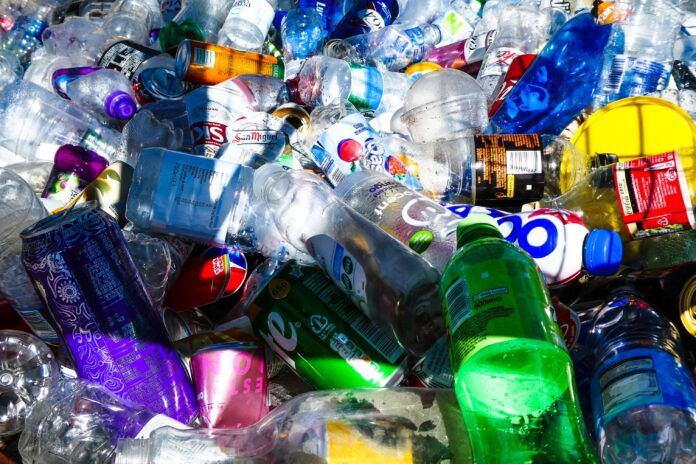For business, the one word take-away from COP26 was ‘decarbonize.’ Reducing emissions of carbon dioxide and other greenhouse gases across a company’s operations is rising on the agenda of many companies.
Emissions from electricity use, transport and other energy-consuming activities need to be addressed and reduced. However an overlooked and fairly low-cost way to reduce emissions is by recycling waste materials rather than sending them to landfill.
Track the weight of recyclables
To do this, an efficient measuring and reporting system is required to track the weight of the recyclable materials coming out of the premises. Using particular ‘conversion factors’, their weight can be translated into an amount of CO2e avoided by circling the materials back into the manufacture of new products again, or preventing organics such as food waste from going to landfill and discharging methane gas. (CO2e, or carbon dioxide equivalent, is the standard way of abbreviating all greenhouse gases going into our atmosphere, including CO2, methane and others.)
Using conversion factors
Some conversion factors are less rigorous than others. Those that offer a bulk conversion of mixed waste recyclables take an average weight and emission factor as acceptable. While being less rigorous, this is simpler, as no prior separation of the materials is necessary.
For more credible reporting however, waste materials are first sorted into their different types – for example, paper, plastic, glass, metals, organics – then weighed separately. The weights of the materials are converted into the corresponding amount of CO2e emissions that are prevented (or ‘saved’) from going into the atmosphere.
CO2e savings add value
Savings of the CO2e that is emitted can then be included in an annual report, as well as in social and other media content to investors, customers and suppliers. As a positive indication of corporate business responsibility, this enhances reputation and builds brand value.
If a company wants to go carbon neutral, the conversion data can be used to calculate the amount of offsets required to claim carbon neutrality. This means investing in renewable energy projects such as renewable lighting, heating and mobility to replace ‘traditional’ fossil-fuel based technologies that would have emitted CO2e.
Carbon barriers are going up
Internationally, carbon barriers are going up for exporters whose products have a high carbon content in their extraction, processing and production. This is especially worrying because South African companies in their operations use Eskom electricity which generates much more CO2e emissions per ton than electricity production does in many other countries.
The EU has introduced what is called a ’carbon border adjustment mechanism.’ This proposes to put a tax on imported products based on the CO2e emissions released when they are manufactured in the country of exportation. Government, corporates and brands are also setting ambitious targets for carbon reduction.
Early adopters benefit from decarbonizing
The trend to decarbonize will benefit exporters who respond earliest, as they will be first in line to comply with the new border tax and so be preferred by importing countries.
Decarbonizing will also advantage the supplier companies who provide products to the exporter. This is because so much of the carbon intensity in products is embedded along the value chain.
As these kinds of measures are brought in, companies who can reduce emissions by decarbonizing by whatever means available, will be increasingly rewarded.
- Hugh Tyrrell is an independent sustainability consultant and writer at www.greenedge.co.za

Hugh Tyrrell is a sustainable business coach and writer at www.greenedge.co.za

